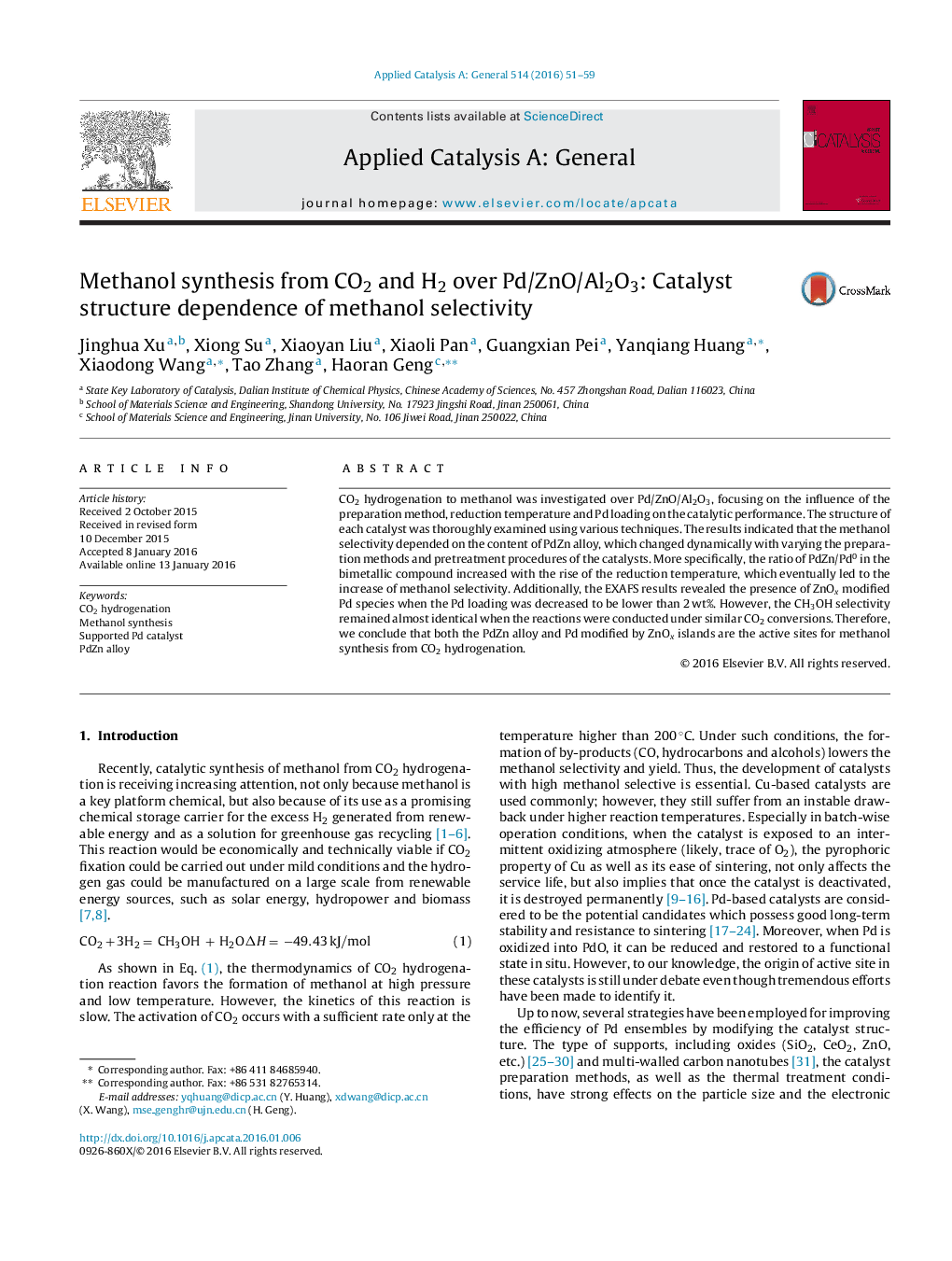| Article ID | Journal | Published Year | Pages | File Type |
|---|---|---|---|---|
| 38941 | Applied Catalysis A: General | 2016 | 9 Pages |
•Catalyst prepared by coprecipitation method exhibited higher methanol selectivity than those obtained from wet impregnation and deposition–precipitation methods.•The content of PdZn alloy raised from 34% to 100% when the reduction temperature was elevated from 300 °C to 500 °C.•ZnOx islands modified Pd species was formed when the Pd loading was decreased.•CH3OH selectivity depended on the content of PdZn alloy and ZnOx islands modified Pd species.
CO2 hydrogenation to methanol was investigated over Pd/ZnO/Al2O3, focusing on the influence of the preparation method, reduction temperature and Pd loading on the catalytic performance. The structure of each catalyst was thoroughly examined using various techniques. The results indicated that the methanol selectivity depended on the content of PdZn alloy, which changed dynamically with varying the preparation methods and pretreatment procedures of the catalysts. More specifically, the ratio of PdZn/Pd0 in the bimetallic compound increased with the rise of the reduction temperature, which eventually led to the increase of methanol selectivity. Additionally, the EXAFS results revealed the presence of ZnOx modified Pd species when the Pd loading was decreased to be lower than 2 wt%. However, the CH3OH selectivity remained almost identical when the reactions were conducted under similar CO2 conversions. Therefore, we conclude that both the PdZn alloy and Pd modified by ZnOx islands are the active sites for methanol synthesis from CO2 hydrogenation.
Graphical abstractFigure optionsDownload full-size imageDownload high-quality image (130 K)Download as PowerPoint slide
